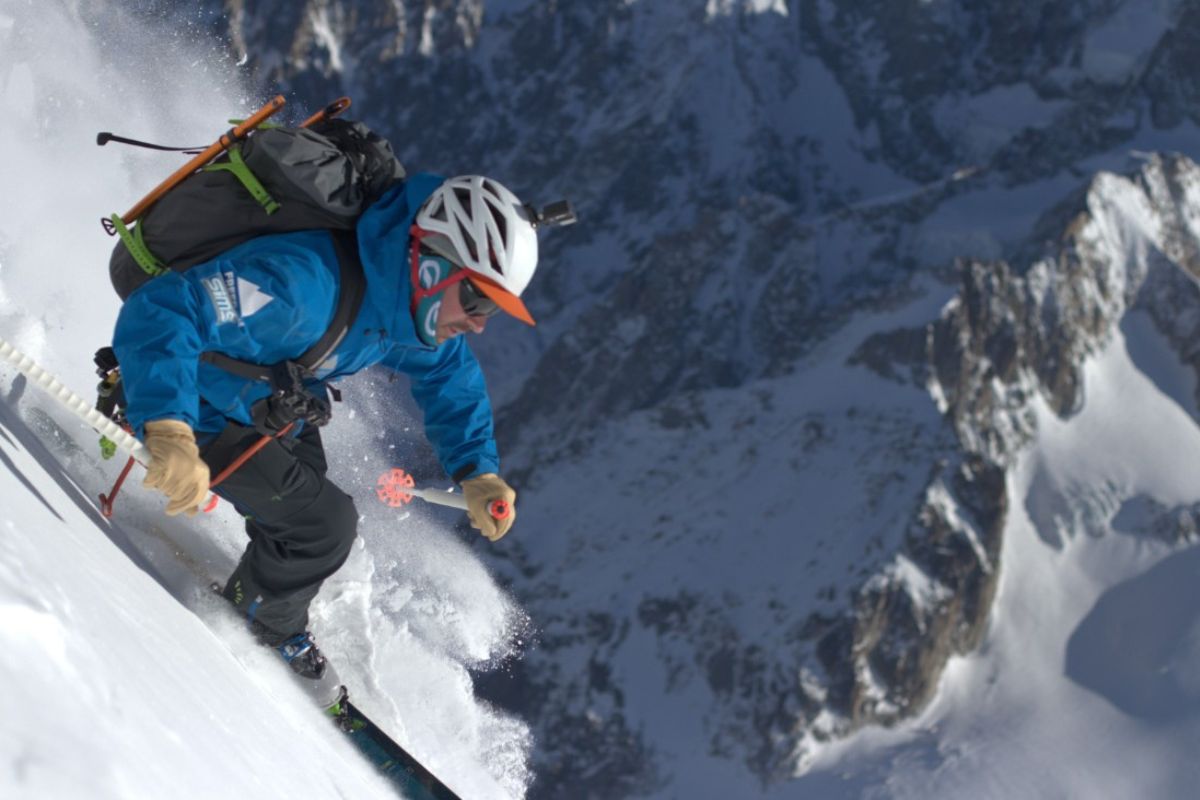Ski Skills P3: Mastering Steeps


Photos: freedomsnowsports.com
Mastering the technique – and your head-game – for skiing steeps opens up a whole world of opportunity. If you feel in control on steep terrain, you can ski just about anything. While you might already be taking on steep terrain like a mountain goat on espresso, a few pro tips can help you charge even harder on even steeper slopes (and with less bleating).
Whether you’re teetering on the edge of a Scottish gully or poised at the top of the Aiguille du Midi, skiing steeps is all about commitment. Coaxing yourself into precariously steep places feels all the more possible if you’ve got solid tactics and technique to fall back on. What’s more, skiing steeps can quickly become dangerous if not approached correctly. In this article, we’ll explore some top tips and drills to practice, helping you venture more safely and confidently into steep terrain.
First, let’s clarify what we consider as ‘steep.’ Generally, most would agree that black groomed runs qualify as steep. However, this can be misleading, as most groomed black runs range between 20 and 30 degrees (with a few exceptions). This is a good introduction and practice area, but generally, we consider steeps as anything more than 30 degrees. Above 30 degrees is avalanche terrain, so always check snow and weather conditions or ensure you’re with a qualified guide.
Those steep runs you see the pros careering down in Chamonix? That’s more like 45 to 55 degrees, or more. Take it slow and build up to skiing the steepest lines. The more exposure to steep terrain you get, the more comfortable you’ll become. You’ll also need plenty of practice in a range of snow conditions, as well as the ability to read the terrain and anticipate changes in snow and potential obstacles ahead.
When approaching steeper terrain, first take a look at what’s in front of you; what do you see? Changes in snow or icy sections? Narrow gaps? Varying gradients? Rocks or trees? Try to plan your route, taking advantage of the spaces and grippier snow.
Next, think about what type of turns you might make. We’d recommend short turns, but how short? Particularly consider difficult spots and work out safe stopping points that protect you and others from snow and sluff sliding from above.
Speaking of sluff (the loose snow that is released when you ski), if you’re lucky enough to be skiing a steep pow run or a soft spring couloir, consider the direction your sluff will take and make sure you keep out of its path – it’s capable of taking you down with it.
Now, visualize your line before you set off and run through it a few times in your head as if you are skiing it. Having a plan and knowing your route will increase your confidence and control.
Small mistakes can quickly snowball on steep terrain. If you are intimidated or hesitate and lose your flow, stiffness and imbalance can quickly take over, leading to a loss of control. You can’t get away with as much on a steeper slope, and once something goes wrong, it’s easy to lose your cool.
From a technical standpoint, two critical elements are balance and movement with the skis. Consider a skater dropping into a halfpipe. They need to keep their center of mass moving with the board, staying on top of the skateboard’s midpoint.
Similarly, in skiing steeps, it’s fundamental to avoid letting your skis shoot forward in front of you. Keep your core strong and engaged, and project your mass forward and down the slope. Moving with the gradient will feel totally counterintuitive, but it will help you transition from turn to turn.
Your lateral balance is also critical. Skiers who are less comfortable tend to reach for the nearest thing to hold onto – the hill. A steep gradient puts the slope right next to your inside hand, but unfortunately, if you reach for this, you will lose grip and balance quickly. Focus on keeping your pole plant well-placed and well-timed. This will keep your hands and shoulders down the slope and the weight on your downhill ski, helping you balance.
Now, let’s work on refining your short turns in preparation for steep terrain. The key lies in strong, accurate rotation of your legs, while maintaining balance over your feet by keeping your upper body facing down the hill.
Gradual progression is key. Find short steep sections to put everything together and allow the technical, tactical, and psychological components to develop. The more time you spend in steep terrain, the more comfortable you’ll become. With steep skiing, there’s lots to learn and practice, including mountain safety aspects, particularly if you want to ski steeps independently of an instructor or guide. If in doubt, keep moving – at least it will all be over much quicker!
Marek is a coach and instructor at British-owned Freedom Snowsports, based in Chamonix. He is also an examiner and instructor trainer for the Czech association. Freedom Snowsports has locations in Saint Gervais, Megève, Chamonix, Méribel, and the Grand Massif. It runs courses for all levels, from beginners to pro training camps. If you’ve ever wanted to develop your skiing skills, these guys are the go-to experts. Find out more at freedomsnowsports.com.